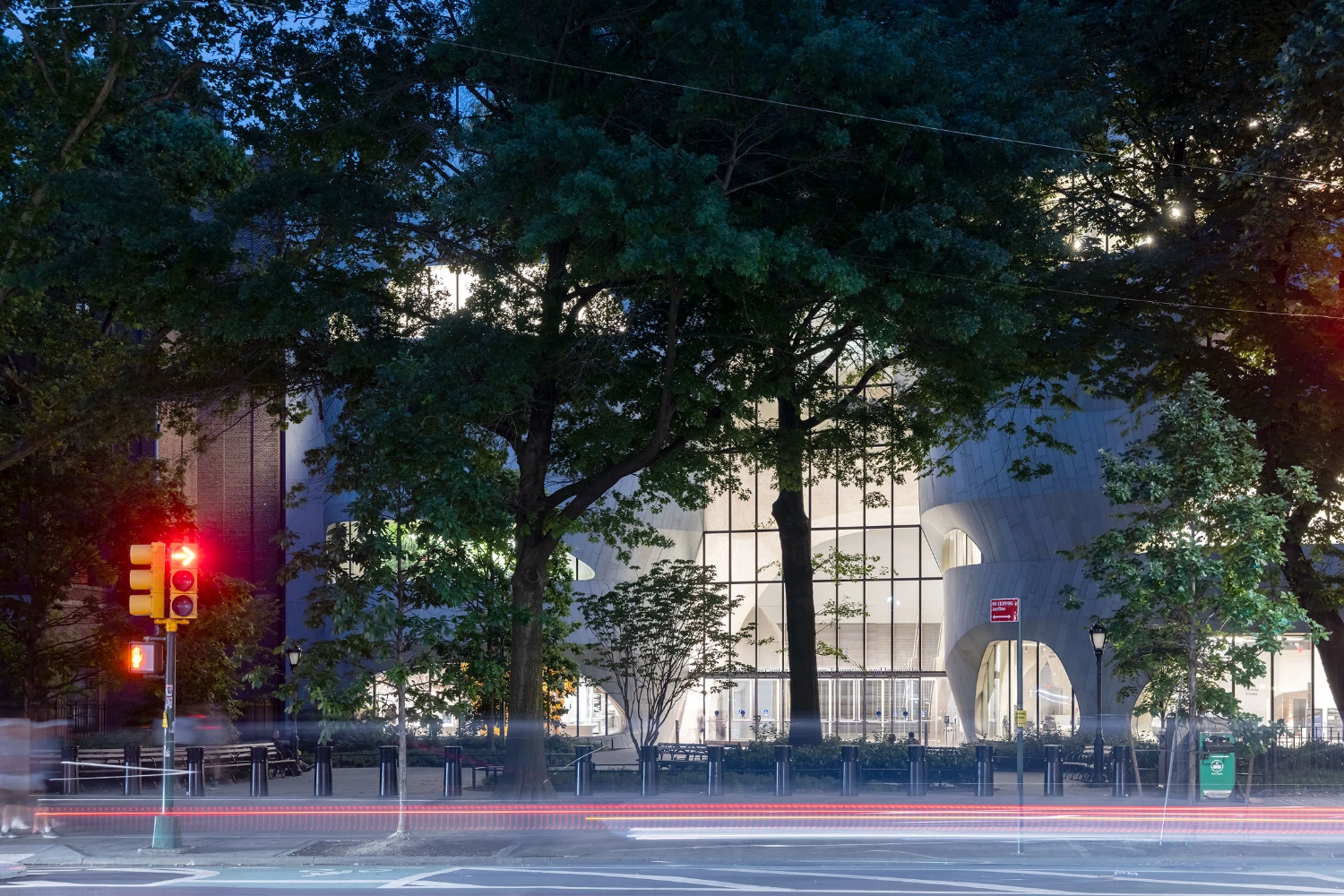The Richard Gilder Center for Science, Education, and Innovation indeed adds a significant new dimension to the American Museum of Natural History in New York City, and this project was developed in collaboration with the Chicago-based architecture firm, Studio Gang.
This striking construction is a paragon of contemporary design, seamlessly integrating the museum's rich history with an atmosphere ripe for discovery and education. The interior of the building unfolds a matrix of gentle curves and niches, promoting a feeling of intrigue and hospitality. Eschewing the conventional, the design opts for an asymmetric layout that mirrors the spontaneous and captivating forms intrinsic to the natural world.
Set apart from the city's bustling streets, the six-story structure spans an expansive 230,000 square feet. Its slightly removed, cave-like interior spawns an aura of exploration that begins on the urban frontier.
The center of the building is home to the Kenneth C. Griffin Exploration Atrium, a structural tribute to natural forms like canyons and caves. The expert engineering by ARUP employs the use of shotcrete—a technique that sprays wet concrete onto rebar. This innovative process eliminates the need for formwork and allows for unique, non-repetitive shapes, which are then painstakingly hand-finished.
The inspiration for the architectural marvel is as intriguing as its design. The architects embarked on a comprehensive exploration into the natural world, scrutinizing the forms of melting ice flows to discover optimal shapes, lines, and structures that would best represent their vision of organic architecture. This modern architectural endeavor invites discovery, welcoming individuals of all ages. As Jeanne Gang, one of the founding partners of Studio Gang, puts it, "To be an architect is to extend your childhood throughout your entire life. It’s about the joy of exploring space.”
Despite its formidable price tag of nearly half a billion dollars for design and construction, the Richard Gilder Center stands as a testament to the power of inclusive and multi-generational design. Its blend of the familiar and the unique makes it a place where visitors from all backgrounds can delve into the excitement of science and discovery. The center's design underscores the notion that science, education, and architecture, much like art, are universal languages that transcend barriers and incite curiosity.


























